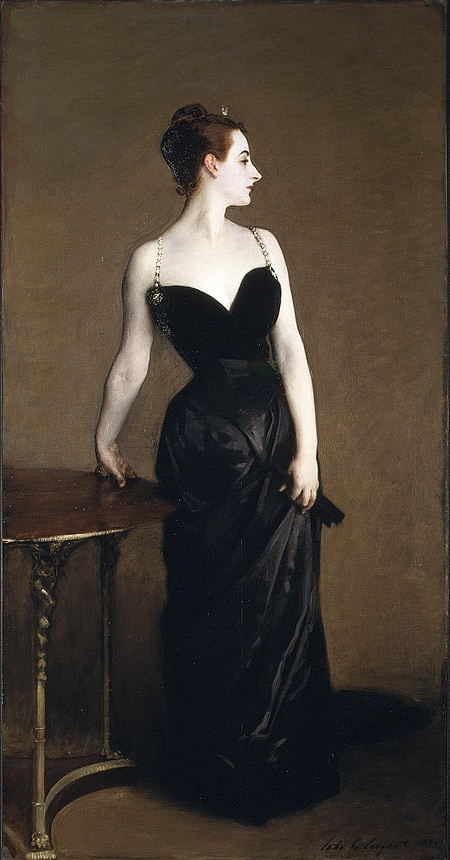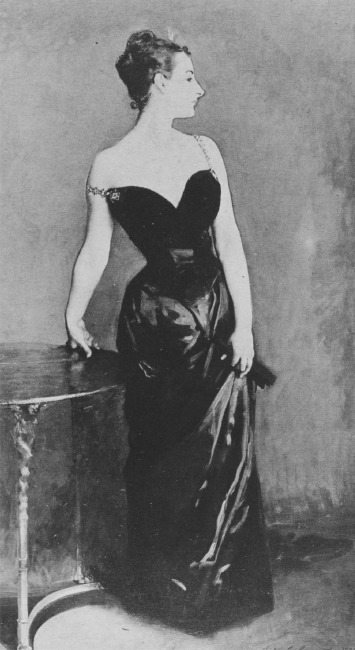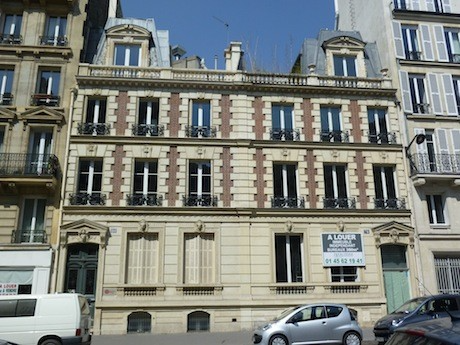Paris Itineraries: Madame X and History’s First ‘Wardrobe Malfunction’

Mon 20 Jun 2011

Appearance is everything. It is true today; it was true in the 19th century. And of all the people in that century who were judged by their appearance, perhaps the greatest star and the greatest victim was the woman known to the art world as Madame X. You can visit her world in the less well-known 17th Arrondissement through one of the Paris itineraries described later in this blog post.
At the height of her popularity in the 1880s, the beautiful Madame X was practically mobbed wherever she appeared; people stood on chairs to catch a glimpse of her. But she was also the subject of a portrait painted by the American artist John Singer Sargent that was furiously criticized. The public’s hatred of the painting was so intense that Sargent eventually left Paris, because nobody in Paris wanted a portrait by the man who had painted That Picture of That Woman.
That Woman, Madame X, was an American heiress born in New Orleans, who had been brought to Paris as a salable item on the Paris marriage market. She had been duly married off at the age of 19 to the highest bidder, a 40-year-old banker and dealer in fertilizer (bat guano, to be precise). As the eye-catching young wife of a dull older man, she became celebrated in Paris society.
Her real name was Amélie Avegno Gautreau. She was striking, rather than beautiful, but in Paris, striking was probably more marketable than beautiful. The city was full of beautiful women, but Amélie was a one-off. She had white skin, red hair, a long nose and an hourglass figure. She used lavender-colored powder to make her pale complexion even paler and chose dramatic dresses that accentuated her curves.
Amélie was a professional beauty. Her life was devoted to her image (what today we would call her “brand”). She used her clothes and her makeup to make an unforgettable impression, and strategically decided which invitations to accept and which to ignore, so she would be seen to her best advantage.
When the American painter and man-about-town John Singer Sargent saw her, he decided he had to paint her portrait. He figured it would make his reputation. It did, but not in the way he expected.
He started work in 1883. Amélie was 24. He reviewed her wardrobe and chose a dramatic black dress that set off her hourglass figure, her pale skin, her red hair. He experimented with different poses. She was not easy to paint—she was restless and hated standing still. Eventually, Sargent decided to do a full-length, almost life-size portrait of her, with her faced turned away to show her distinctive profile and her pale skin accentuated against a dark background.
And, as a minor detail, he painted her as she looked one day when her right shoulder strap fell down onto her arm. He later altered the painting, but this is what it looked like originally.

The portrait was exhibited at the 1884 Salon. Almost everyone hated it. Amélie was said to look indecent. Shameless. Bear in mind that the Salon was full of pictures of completely naked women in all kinds of poses. What seemed to madden the French public was Madame X’s attitude. Here was a woman with a fallen shoulder strap who stared haughtily off into the distance, looking down that long nose of hers. She didn’t care who saw her or what they thought. It drove people nuts.
The criticism went on and on. It was so bad that Sargent had to leave Paris. He kept the painting (later repainting it to fix the, ahem, wardrobe malfunction). And Amélie? She couldn’t leave town; she just had to ride out the gossip.
Eventually, the scandal died down. Amélie survived as a society beauty, but her life was never the same, and she eventually retired from public view and became a recluse. Sargent had a prosperous career in London and kept the painting that nobody wanted (it is now in the Metropolitan Museum of Art, in New York). Almost no Sargent paintings remain in Paris. The French have long memories.
But a few traces of this story remain, and they make for an interesting walking trip. Last year, a friend and I decided to visit the area where the story took place—the 17th Arrondissement. It’s not on the typical tripist itinerary of Paris, but if you want something a bit different, this route might be for you.
We started at the Parc Monceau. When Amélie arrived in Paris, this was the edge of the city. She was part of the nouveau riche crowd, and she lived in the suburbs, not the center of town. She and her husband bought a house to the northwest of the park at 80, rue Jouffroy. The house still stands, much as it looked when she lived there (it’s the one on the left with the closed shutters).

This is not the central city of uniform facades and rigidly controlled streetscapes. The wealthy in the 19th century wanted distinctive houses, and the neighborhood is full of unusual architectural styles, expressing the varying tastes of its residents. There are turrets and oddly shaped windows and colorful mosaics and convoluted balconies galore.
Sargent’s studio on the nearby rue Berthier is gone now, although the buildings on either side, with their north-facing studios, are probably similar to the building that was demolished. You can imagine what it looked like. (The tall white modern building stands on the site of Sargent’s former studio.)

For anyone who enjoys getting off the beaten track in Paris, a stroll from the Parc Monceau to the rues Jouffroy and Berthier offers a glimpse of a wealthy and seldom-seen part of the city, largely unchanged since the 19th century.
We stopped for lunch at Le Petit Villiers on the avenue de Villiers, a pleasant restaurant just around the corner from Madame X’s house. I can also recommend La Fourchette du Printemps, which we tried on another occasion; it, too, is close to the rue Jouffroy.
And if you want to learn more and add to your collection of books on Paris, I highly recommend Strapless: John Singer Sargent and the Fall of Madame X, by Deborah Davis.